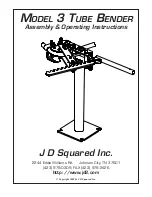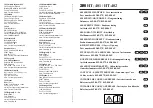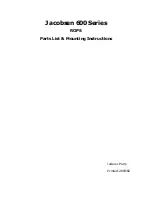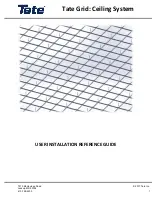
42
Subject to change without notice
function as the time base B variable control. For a full descrip-
tion see ”28.1.3 Variable“.
30.1.9
Holdoff …%
In this mode the hold off time may be selected from 0 to
100 % with the INTENS knob
2
. Values
>
0 extend the
waiting time after a sweep before a new one can start
and decrease thus the repetition rate which may darken
the display. This is indicated by the HOLD OFF-LED
25
lighting up. The hold off time is only valid for time base A.
Further information can be found in the section ”Hold off adjust-
ment“ in the chapter ”Triggering and time bases“.
30.2. Digital mode
In the ”Zoom“ menu the following time base functions are
available:
30.2.1
Off
In ”Zoom Off“ condition only time base A is active. The readout
will thus only show ”A...“ in the top left corner. The speed can
be set with the TIME/DIV-SCALE-VAR knob
28
.
30.2.2
Search
Part of the time base A display will be intensified and this portion
will also be displayed expanded over the full screen, if neither
reference nor mathematic signal display is activated. With the
HORIZONTAL knob
27
the intensified sector and the expanded
display can be shifted provided that the pushbutton X POS DE-
LAY
26
is illuminated which means ”Delay“. The length of the
intensified sector is determined by the speed of the Z time base.
The Y position of both displays is identical so they are written one
over the other. In order to separate them for better readability an
artificial Y offset may be added to the Z time base display. Press
the pushbutton CH1/2-CURSOR-MA/REF-ZOOM
15
to call the
menu ”Pos./Scale“.
Then press the function pushbutton ”Zoom“. Now the POSI-
TION 1 knob will function as Y position control for time base
Z. As this only makes sense in ”Search“ mode it is unavailable
in others.
The signal(s) Y position is independent from the time base (A
and Z) used for display. As a result the signal displays of time
base A and Z are not easily evaluated, as both signal displays
are shown in the same Y position. This can be avoided by
changing the Z trace position in the following way: Press the
CH1/2–CURSOR–MA/REF–ZOOM-pushbutton
15
to call the
“Pos./Scale“ menu. Then press the function key “Zoom“ so
that the POSITION 1 knob
13
becomes the trace separation
control (see 13.1.5 Y Position - 2
nd
time base). As there is only
a demand for trace separation in “Search mode“ this function
is only offered in this time base mode.
30.2.3
Zoom only
Only the Z time base will be displayed in this setting. Thus the
readout in the top left position only displays the “Z....“ time
defl ection coeffi cient and the TIME/DIV–SCALE–VAR-knob only
affects time base B.
31
CH1
/
VAR
(pushbutton)
This pushbutton opens the CH1 menu which contains the follo-
wing options referring to CH1
34
and the signal on CH1.
31.1. AC DC
Pressing the pushbutton will switch from AC to DC or vice versa.
The mode selected will be shown in the readout following the
sensitivity setting: ~ is for AC and = is for DC.
31.1.1
DC coupling
The signal will be directly coupled, from the BNC connector via
the attenuator to the vertical amplifier. The input resistance is
1 MΩ in all positions of the attenuator.
31.1.2
AC coupling
A capacitor is inserted between the BNC connector and the
attenuator, blocking the DC content of the signal and creating
a low frequency cut off at approx. 2 Hz. This will affect the sha-
pe and amplitude of signals with low frequency content. If the
DC content of the signal, or the duty cycle of pulses changes
the capacitor will charge or discharge, and this will cause a
momentary Y shift of the display.
31.1.3
50 Ω / 1 MΩ Input Impedance
This function allows you to select the input impedance of channel
1. For measurement of low and high frequencies voltages at sour-
ces with impedances deviating from 50 Ω an impedance setting
of 1 MΩ is recommended, together with the use of a frequency
compensated divider probe for minimum capacitive load.
If the source impedance is 50 Ω and the voltage to be measured
is within the voltage limits a 50 Ω cable and 50 Ω impedance
setting should be used.
31.2 Ground (GND) On Off
The pushbutton will either connect the amplifier to the signal
or to ground. If set to Ground the readout will show a ground
symbol following the sensitivity setting, where the coupling
symbol was before. In the Ground position and with automatic
triggering a trace will be visible, this is handy for setting the
Y position e.g. to the screen centre without disconnecting the
signal. After switching back to the signal its amplitude can
now be determined with respect to the formerly set zero re-
ference.
The 0 V (Ground) position can but must not be determined in
the way described above, as the readout shows a symbol ( )
for 0 V which is displayed 4 mm left of the vertical graticule line
in the screen center.
31.3 Invert On Off
(not in analog XY mode)
The pushbutton will alternate between not inverted and inverted.
An inverted signal will be indicated in the readout by a bar above
the channel symbol. The trigger signal taken from an input will
not be affected.
31.4 Probe
The menu display depends on whether a probe with automatical
dividing factor identifi cation is connected or not. The actual
parameters are taken into account in the display of voltage
measurement.
31.4.1
If a HAMEG probe with automatic identifi cation is connec-
ted, the readout shows “Probe“ in normal intensity and below
the dividing factor (e.g. *10).
31.4.2
If the “CH1“ menu is called, “Probe“, if a probe without
identifi cation is connected, the last set dividing factor and the
INTENS knob
2
symbol are displayed. Pressing the allocated
function key causes “Probe“ to be displayed with higher intensity
and the FOCUS TRACE MENU pushbutton
3
to light constantly.
Then the INTENS knob
2
can be used to select a dividing factor
which should accord with the connected probe.
31.5 Bandwidth Full/20 MHz
(menu: page 2)
This pushbutton will select full or 20 MHz bandwidth:
– Full:
Full bandwidth will be the one given in the specifica-
tions.
C o n t r o l s a n d R e a d o u t







































